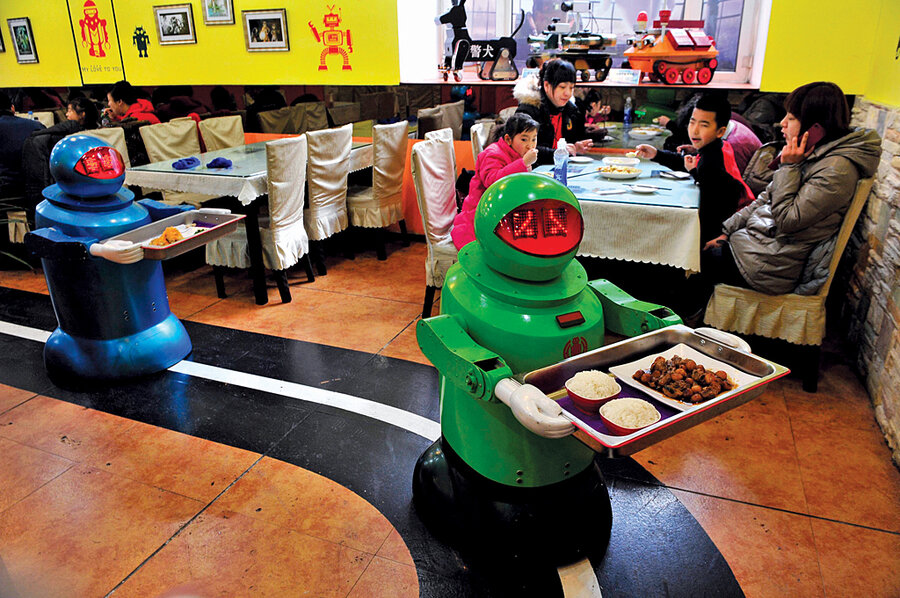Machines versus people
Loading...
The liberating promise of technology was neatly captured in the old IBM slogan “Machines should work; people should think.” Back in the day of gas station attendants, stenographers, and telephone operators, automation seemed like a no-brainer. Who wouldn’t want to see menial, repetitious, uncreative work replaced by a machine? Who wouldn’t want to swap a plow horse for an air-conditioned tractor?
Then brains were added to the automation agenda, first as simple mechanical programs, then computers, then complex algorithms – accelerated by advances in microchips, networks, robotics, hardware, and software. Now automation is displacing even people who think. A machine can do almost any task that falls into an observable pattern. If your work feels routine, you are a candidate for obsolescence by automation.
There will always be a place for artisanal craftsmanship. At least, I think so. At this point. Probably. But the steady, middle-class jobs that powered industrial countries through most of the 20th century are disappearing. The center of the workforce is being hollowed out. Most jobs of the future will be either at the high-skilled upper end or the low-skilled lower end.
When politicians lament the loss of middle-class jobs, they are right about the difficulties workers face and the need for retraining and buffering during this continuous and often painful wave of dislocation. But while outsourcing and a tepid economy are often blamed, the real story is inexorable automation: ever-smarter machines working their way through the workforce.
What does that mean if you’re a graduate looking for your first job, a mid-career professional worried about job security, or just someone who wants to do work that has real value? In a Monitor cover story, Laurent Belsie, who heads up our business and economy team, presents 10 ways to prepare for tomorrow’s job market.
At the Massachusetts Institute of Technology, Erik Brynjolfsson and Andrew McAfee have been studying the relative strengths of humans and machines. In 1997, they note, the world’s top chess master, Garry Kasparov, lost to IBM’s Deep Blue supercomputer. But that wasn’t the end of the line for human chess players. It turns out that human-machine partnerships are better than either chess masters or supercomputers. As Mr. Kasparov himself described this: “Weak human + machine + better process was superior to a strong computer alone and, more remarkably, superior to a strong human + machine + inferior process.”
Machines are good and are getting better, but humans excel at overview and improvisation. Low-skill jobs such as home health-care aides and high-skill jobs such as biomedical engineers are improved by information and tools. And human judgment improves tools and information. As Professors Brynjolfsson and McAfee write, “the key to winning the race is not to compete against machines but to compete with machines.”
A minor case in point: A vacuum-cleaning robot recently joined our household. It is amazing how smart it is. And isn’t. It diligently works the kitchen floor but needs human intervention in a tight spot. Happy to help. And, yes, little robot, message received about not leaving so many shoes and books lying around.
If there’s a future for machines and people, it’s working together.
At least, I think so.
John Yemma is editor of the Monitor. He can be reached at editor@csmonitor.com.








